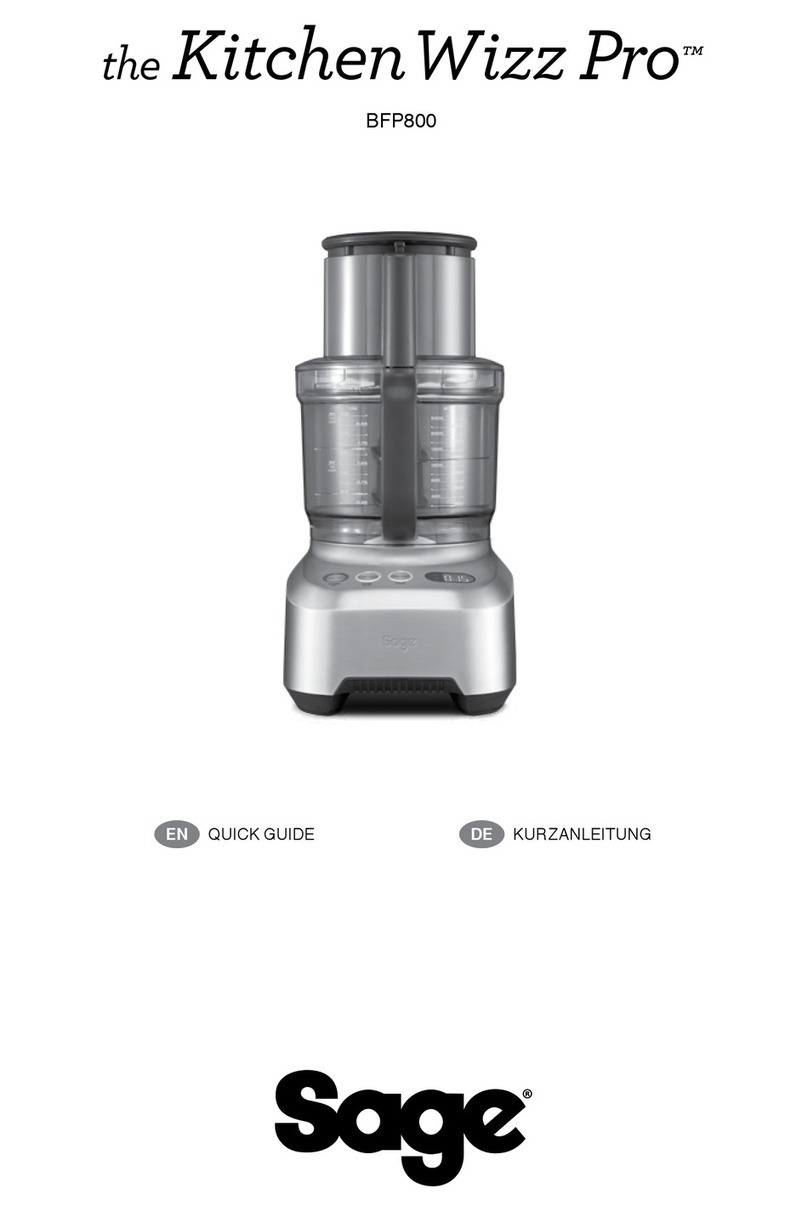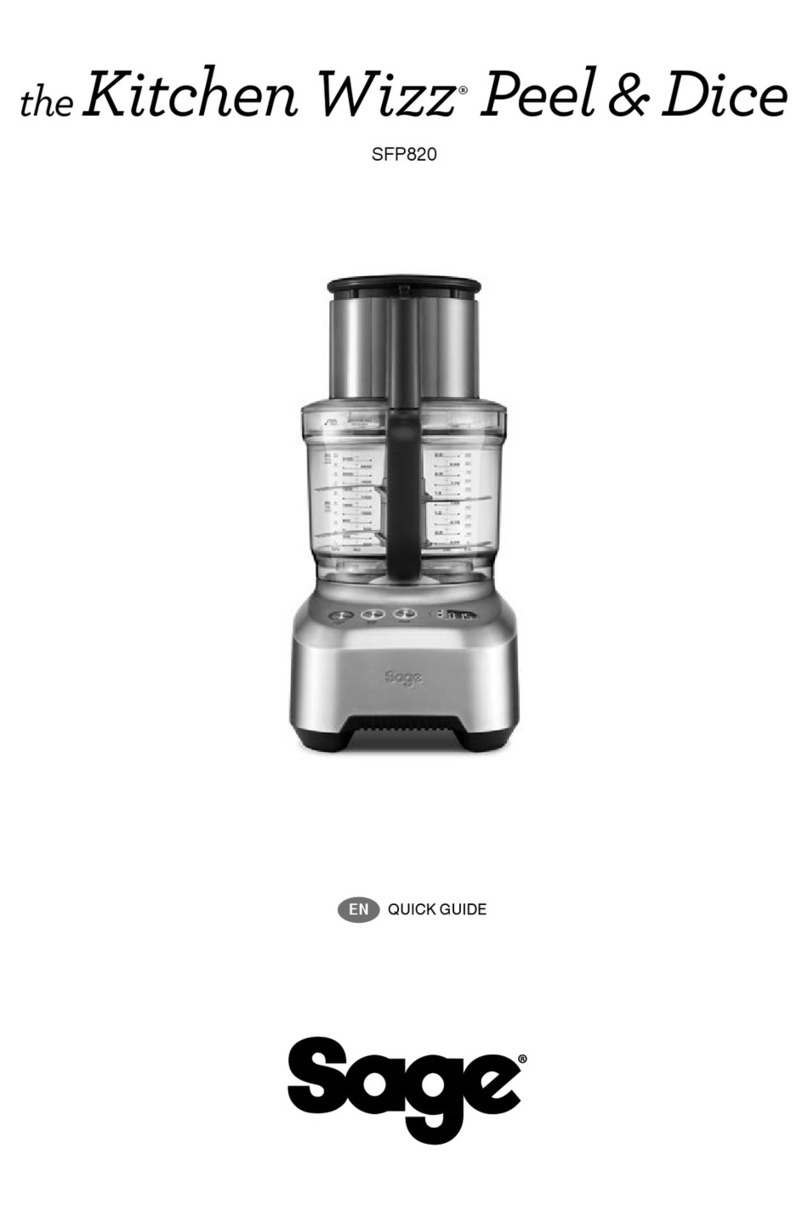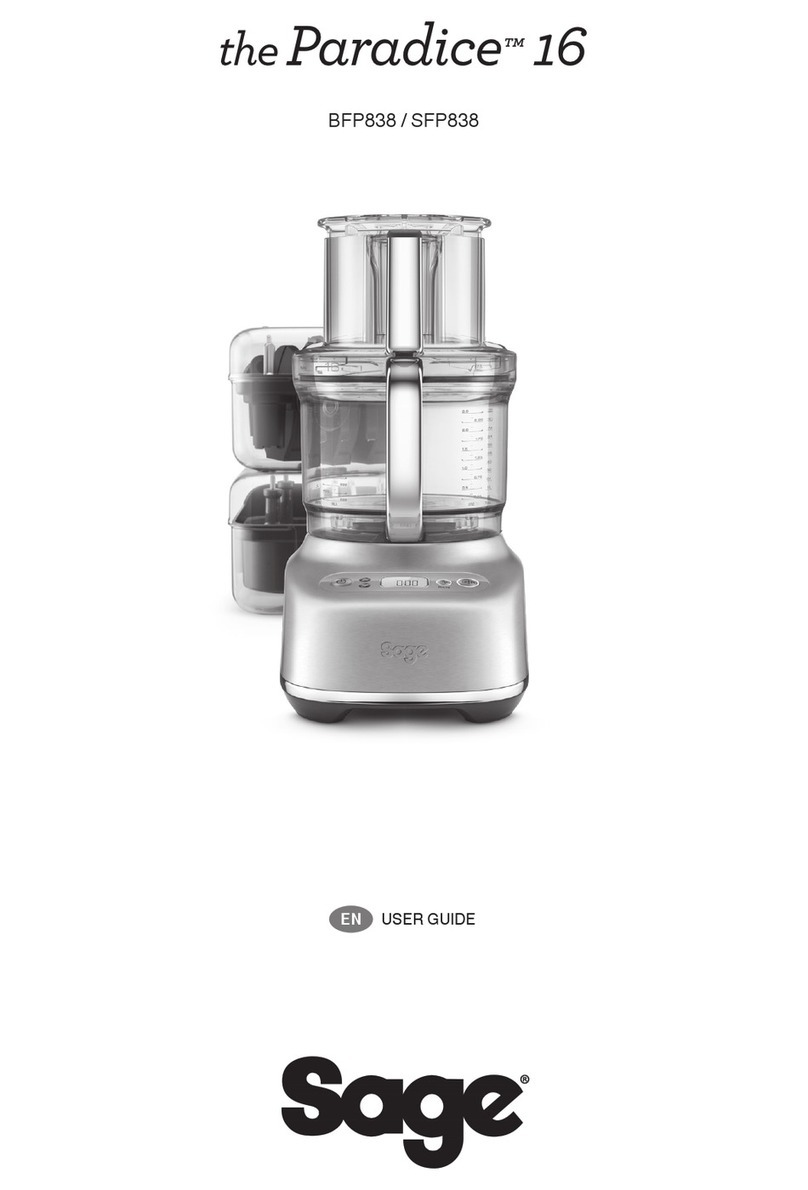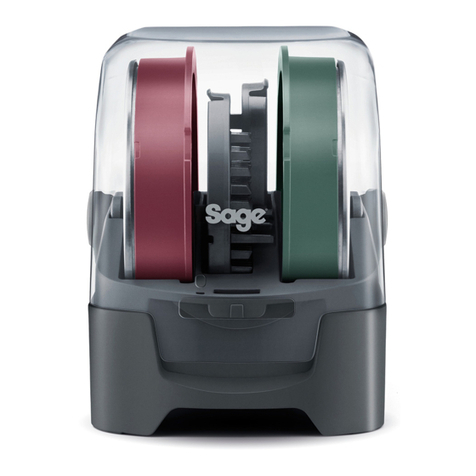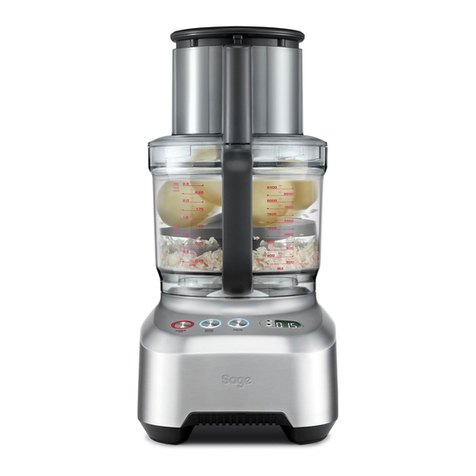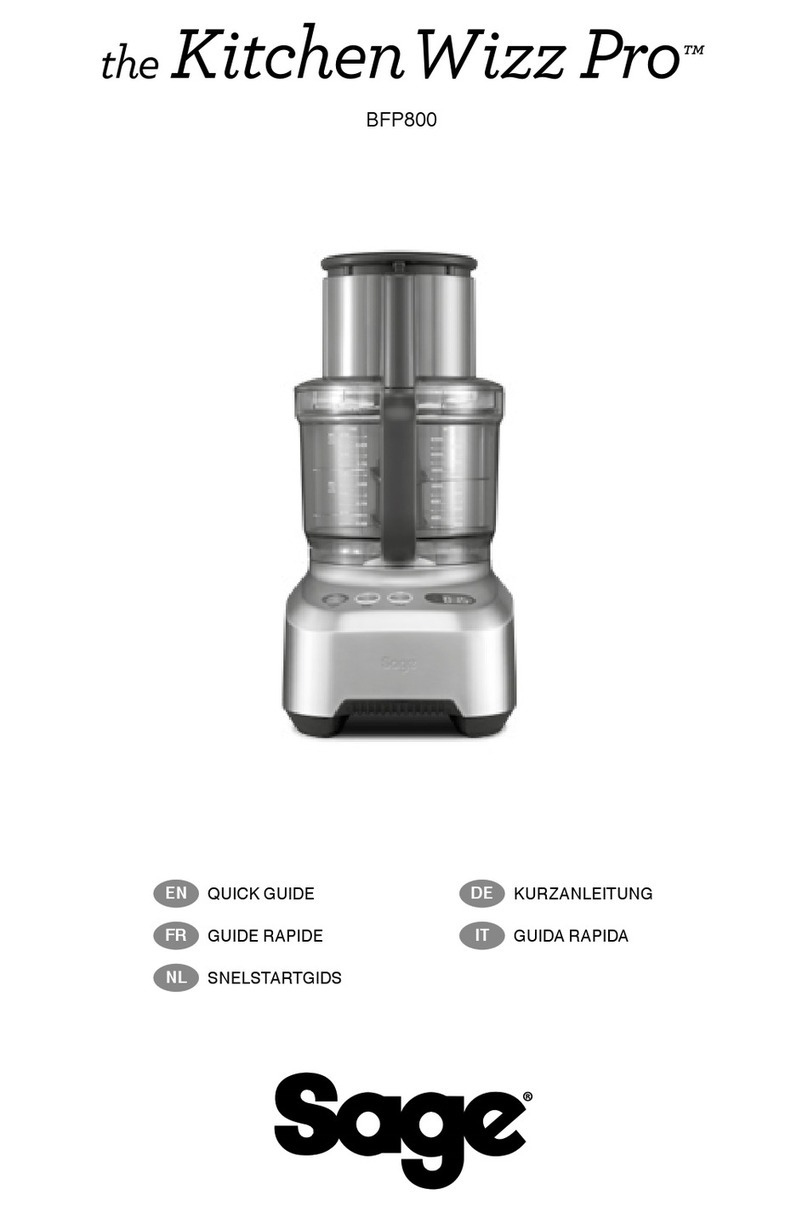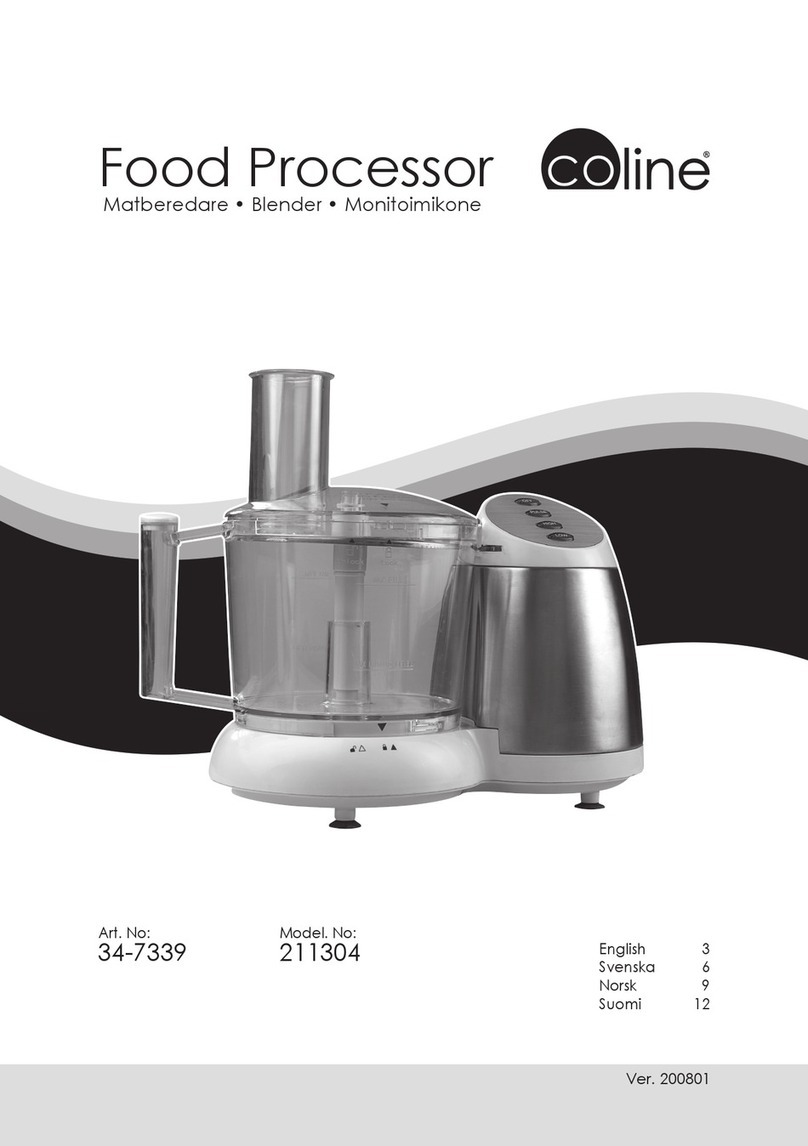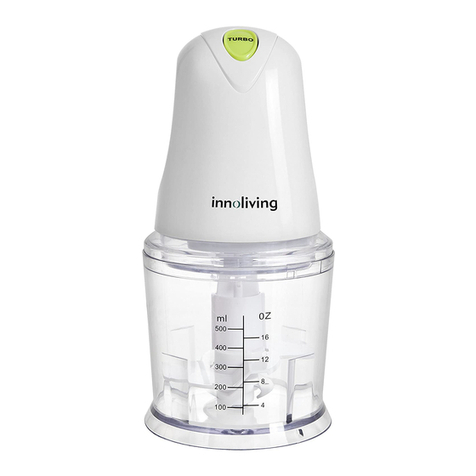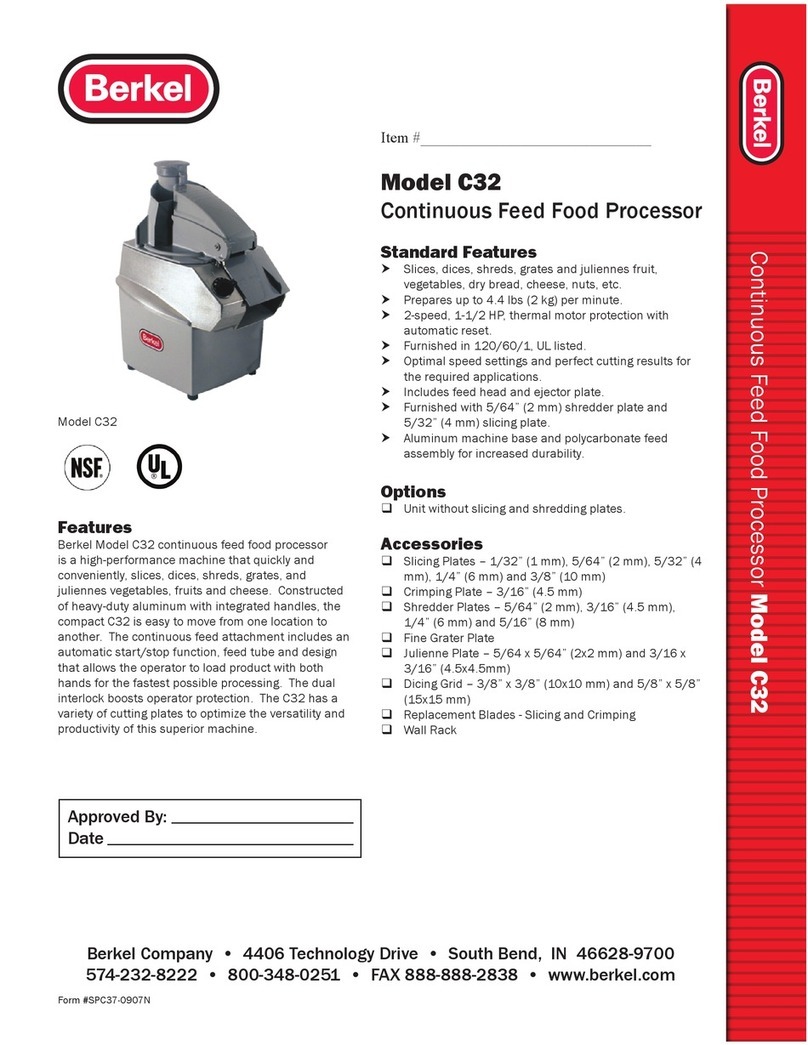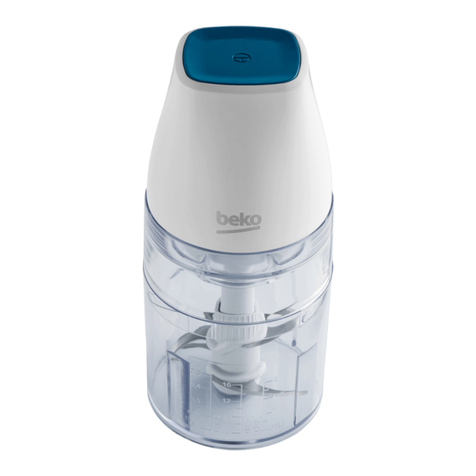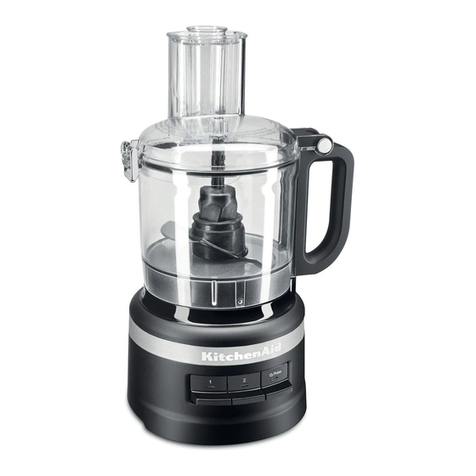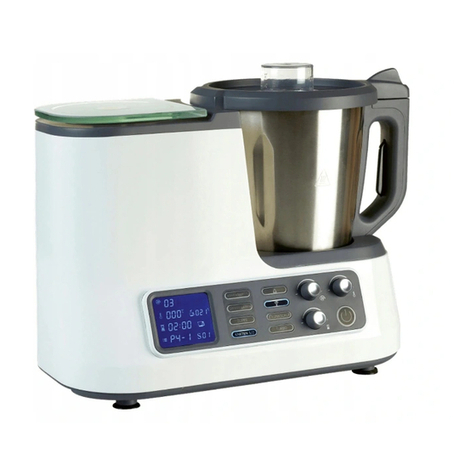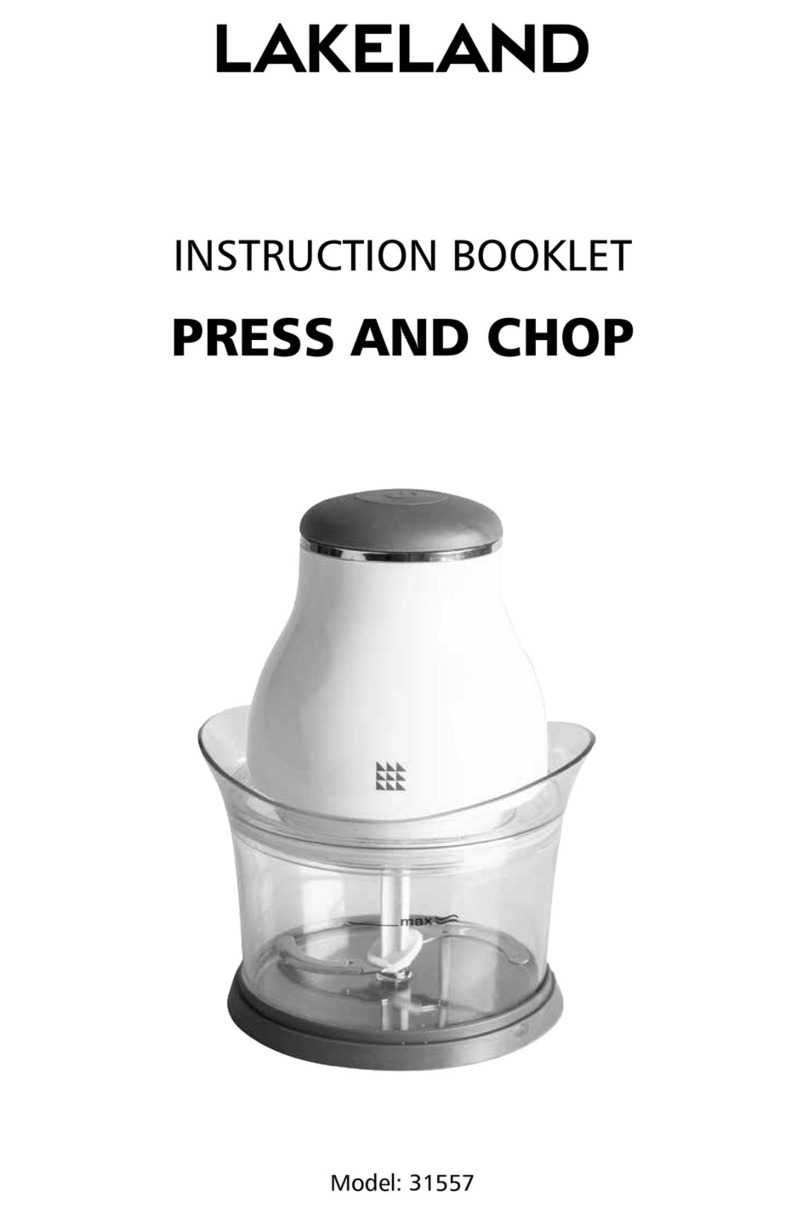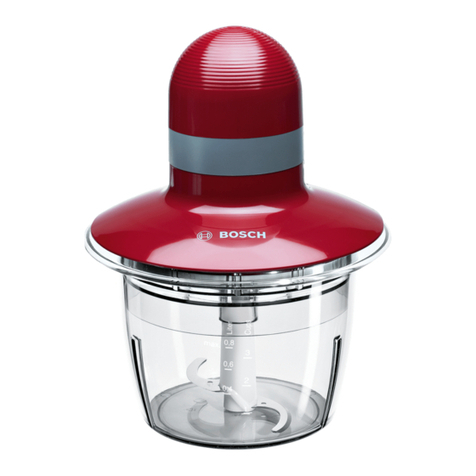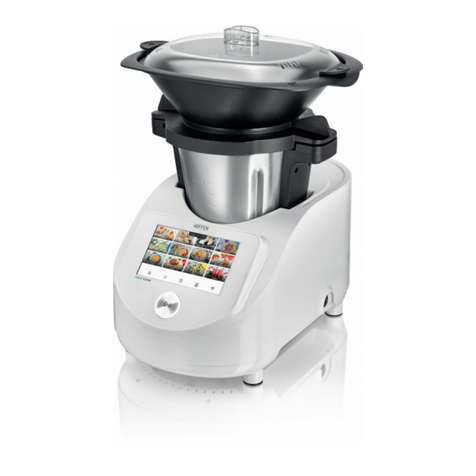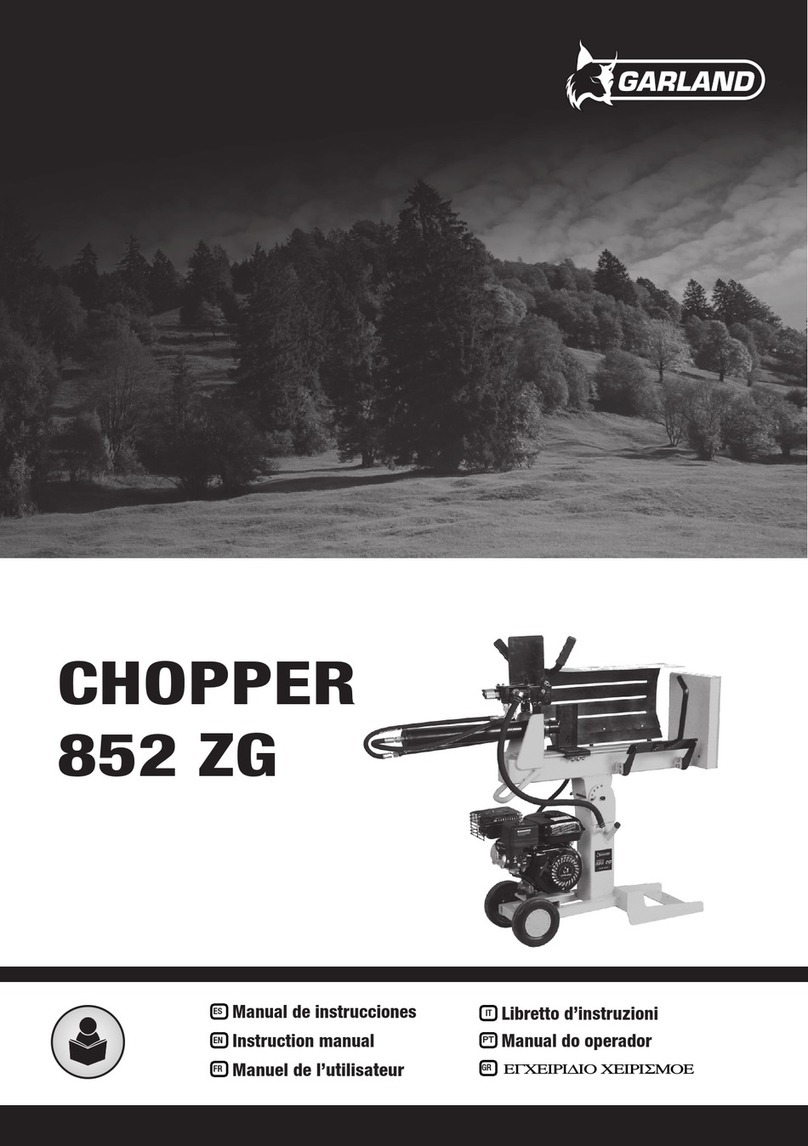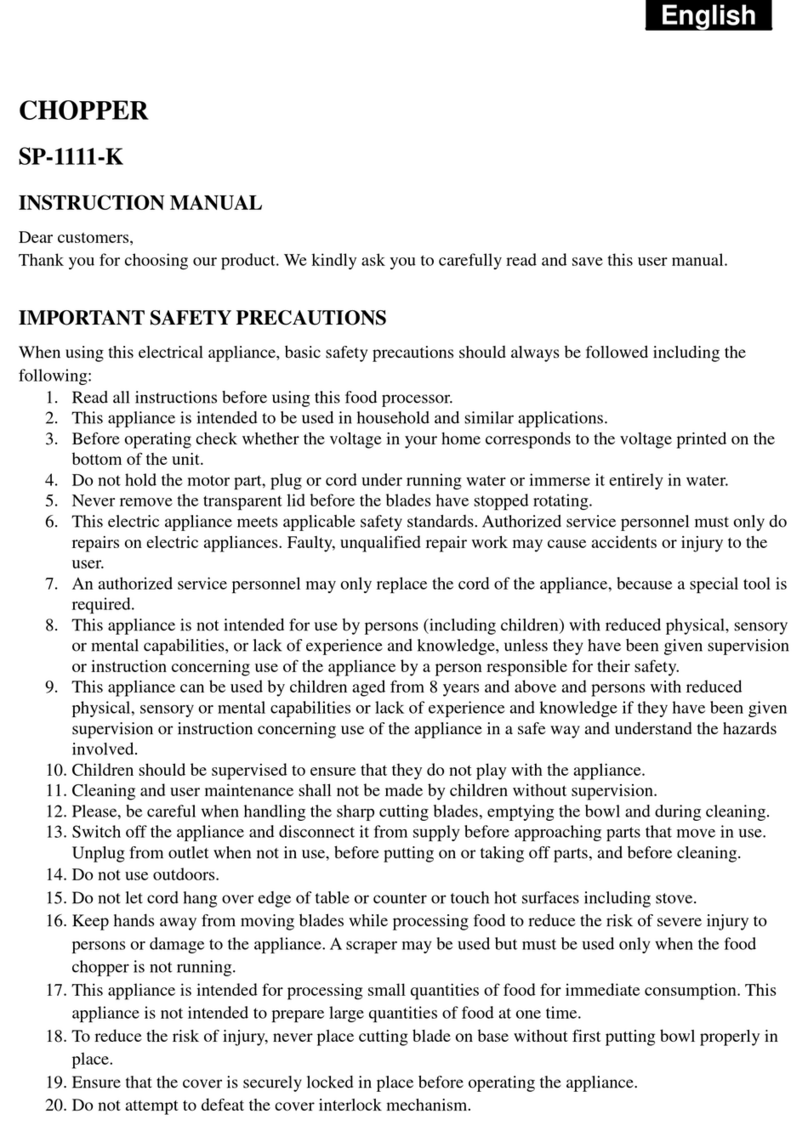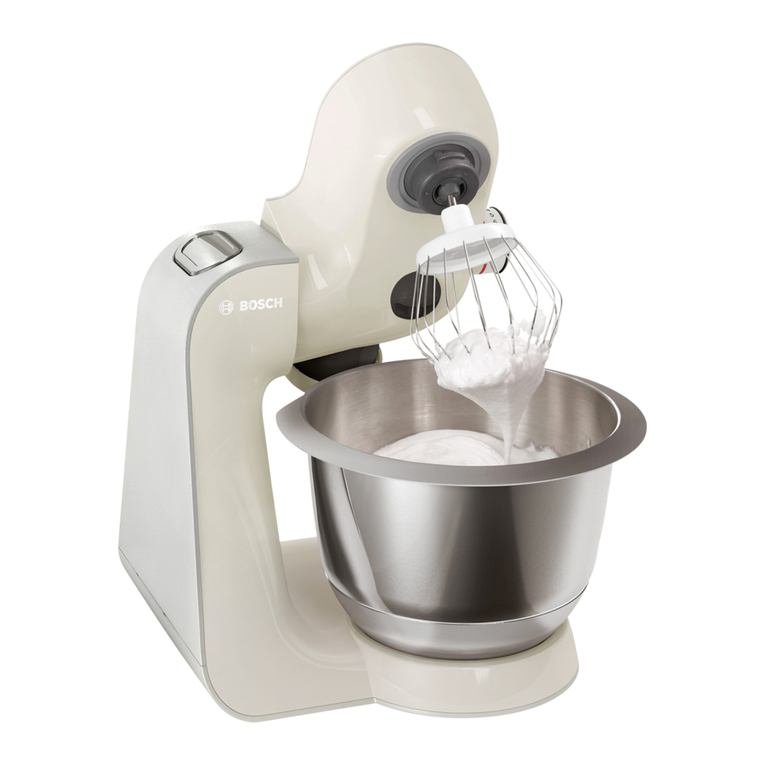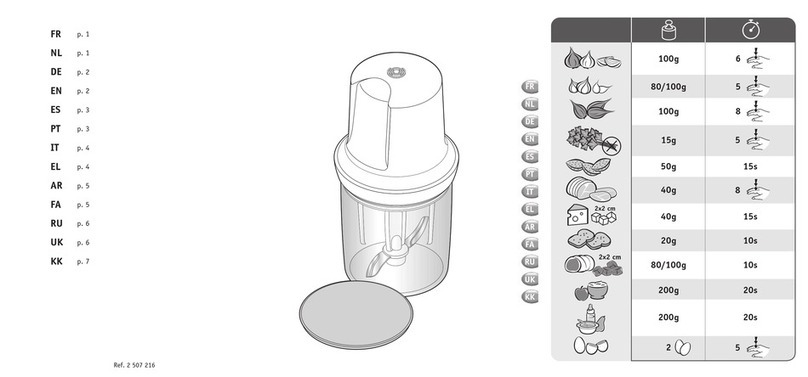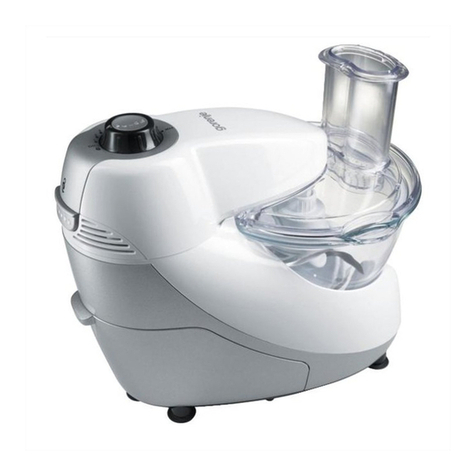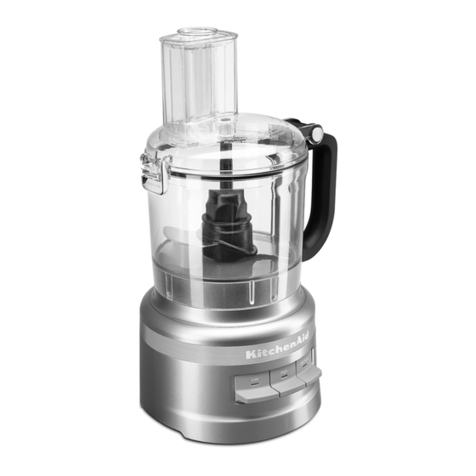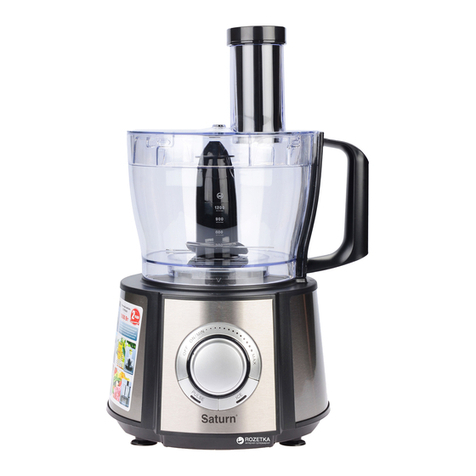
4
SAGE®RECOMMENDS SAFETY FIRST
a circuit that can regularly switch
the appliance on and o.
• Carefully read all instructions
before operation and save
for future reference.
• The appliance can be used by
persons with reduced physical
or mental capabilities or a lack
of experience and knowledge,
only if they have been given
supervision or instruction
concerning use of the appliance
in a safe way and understand
the hazards involved.
• This appliance shall not be
used by children.
• Do not leave the appliance
unattended when in use.
• Do not push food into the
feed chute with your ngers
or other utensils. Always use
the food pusher provided.
Do not place hand or ngers
into the food chute when it is
attached to the appliance.
• Do not place any part
of the appliance in the
microwave oven.
• Do not move the appliance
whilst in operation.
• Handle the food processor
and attachments with care –
remember the blades and discs
are razor-sharp and should be
kept out of reach of children.
• Always secure the processing
bowl onto the motor base before
attaching the quad blade, dough
blade or discs.
• Always operate the food
processor with the processing
lid securely in position.
• Ensure the OFF button has
been pressed to switch the
motor o and the appliance is
switched o at the power outlet
and unplugged before removing
the lid from the bowl.The
processing bowl should then be
unlocked from the motor body
and the quad blade, dough
blade or discs carefully removed
before attempting to remove the
processed food.
• Please do not crush ICE in the
large or small processing bowls.
This will cause damage to the
blades.We recommend that you
use a blender for ice crushing.
• Do not process hot or boiling
liquids – allow liquids to cool
before placing into the
processing bowl.

